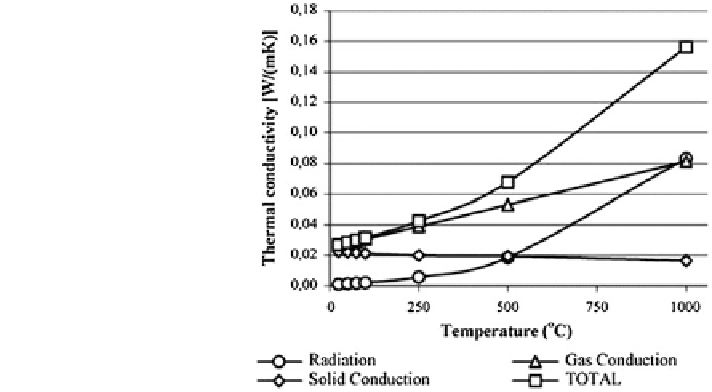Civil Engineering Reference
In-Depth Information
5.2.2 Heat Transport: Conduction
The conduction is described by the first Fourier's law which shows that the energy
transport at the microscopic scale tends to flow from regions of high concentration
of internal energy to regions of low internal energy. The macroscopic heat flux can
be formulated as
Q
conduction
¼
k
r
T
ð
16
:
3
Þ
where
T
temperature
k
conductivity
subscript
heat transfer mode
A simple heat balance equation can be expressed as
ð
qC
p
Þ
oT
ot
¼rð
k
r
T
Þ
ð
16
:
4
Þ
known as the second Fourier's law. For a fibrous material, if it has a low fibre
volume fraction, heat conduction through its solid phase is often neglected.
Therefore, only conduction through gaseous media is considered. The conductivity
depends on the Prandtl number, Knudsen number and the free path of air's mol-
ecules which is the function of temperature, air's collision diameter and the
pressure (Evseeva and Tanaeva
2004
). Karamanos et al. (
2008
) show a picture,
Fig.
16
, about how each transfer mode plays in the total heat transfer for stone
wool fibre.
Fig. 16 Contributions from
major heat transfer modes for
stone wool, adapted from
(Karamanos et al.
2008
); with
kind permission of Elsevier,
2013


